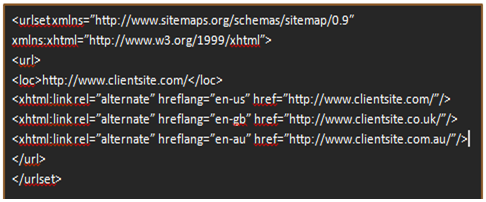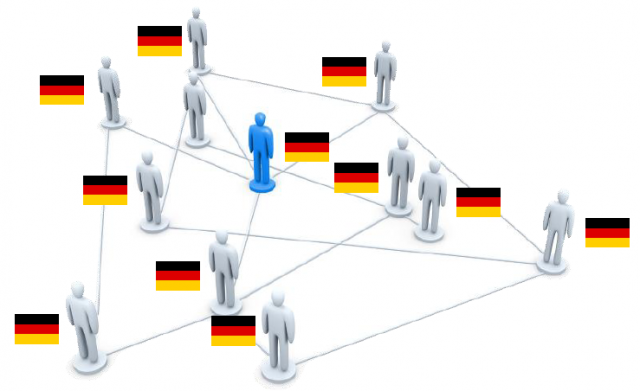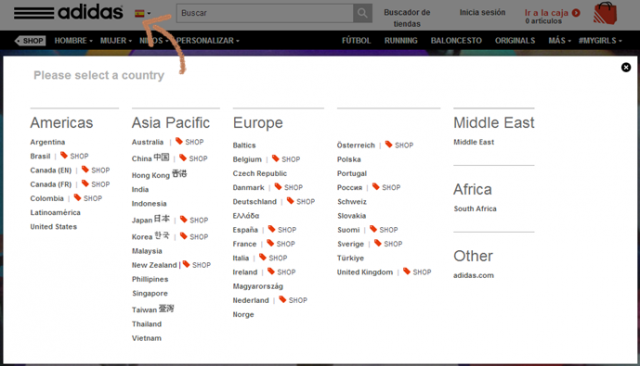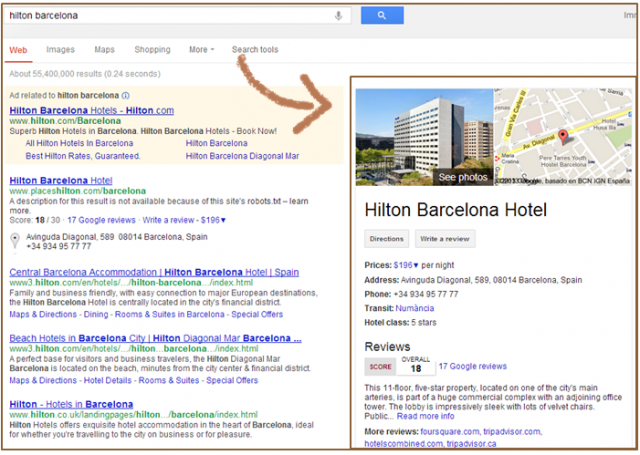Are you already catering to an international audience? Or maybe you’re contemplating international expansion as a means to grow your business?
Whichever is the case, there’s a multitude of factors that come into play when you’re operating globally. Here are some tips and general guidelines that will help you conquer the beast that is international SEO and ultimately succeed on foreign shores:
1. Run PPC campaigns to unveil local search patterns
PPC can be an incredibly cost-effective marketing tool for obtaining valuable market insights in unknown territory. Which search terms are being used? Which ads are being clicked? What converts? What doesn’t? These initial insights will serve as a brilliant starting point for defining and developing highly effective SEO strategies in the locale.
- Check out this article for 5 essential tips for global SEM success.
2. Research keywords, don’t translate them
Oldie but goldie – and for good reason! Despite the avid attempts here on the site and elsewhere, it appears the large majority of businesses still put their international faith in the hands of either machine translation or, if the stakes are slightly higher, sheer translation.
However, as there’s no such thing as a one-to-one relationship between keywords, relying on direct translations is bound to result in a great deal of missed opportunity. Follow this approach and prepare to end up targeting useless keywords with little to no search volume in the locale.
Instead, use the insights you’ve obtained from your local PPC campaigns to support and validate the keyword researches carried out by natives in Google’s, Baidu’s and Yandex’s respective keyword tools.
- If you’re still not convinced, you might want to read this post.
%GC_SERVICE=1269%
3. Have natives write up content around your targeted keywords
Once you’ve got your initial set of keywords for the locale, it’s time to map out where to deploy these. In a post-Panda and -Penguin era it’s particularly important to create natural, high-quality content that resonates with users in the locale, so have natives write up some solid content around those keywords.
Avoid keyword stuffing and machine translation at all costs, however, if money constrains you from localising or translating deep-level pages, ensure to at least disallow robots from crawling those pages by using the robots.txt file.
4. Geo-targeting will make or break your international adventure
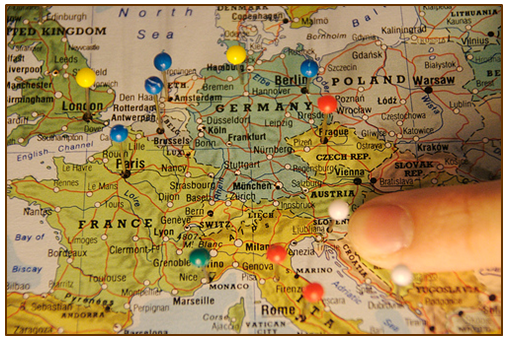 Geo-targeting remains one of the most challenging, yet most important issues when it comes to international SEO. And while there are many different ways to skin a cat, the advice below is tried and tested:
Geo-targeting remains one of the most challenging, yet most important issues when it comes to international SEO. And while there are many different ways to skin a cat, the advice below is tried and tested:
4.1 Host in the country you’re targeting
Hosting in the country you’re targeting is a geo-signal for Google and also allows for faster load speeds.
4.2 Choose a local domain structure
A thorough analysis and evaluation of your site structure before you expand can save you a great deal of trouble down the road. A ccTLD structure (e.g. .de, .fr, .es), however, will generally benefit you in so many ways.
For one, local domains serve as the strongest geo-targeting signal in Google’s algorithm, meaning that your country-specific sites are much more likely to reach their intended audiences.
Secondly, local searchers find ccTLDs to be significantly more relevant, which in turn dramatically increases your likelihood of achieving higher CTRs and ultimately rankings. Moreover, the local domain approach helps you keep a shorter, simpler and cleaner URL structure.
“But hey, I’ve read several places that hosting and maintenance costs can quickly run out of control with a local domain structure?”
Truth is it isn’t really as expensive as some say – not for global companies or those with international aspirations anyway. If you belong to the latter group who have yet to make leap, I assume you’re contemplating international expansion because you’re already doing well in your domestic market and have sufficient free capital to fully support your foreign adventure?
Either way, chances are that this investment might pay off in one of two ways (or both):
- Your performance in the locale is stronger due to greater perceived relevancy, as mentioned above.
- As you reduce complexity and signal more clearly to Google which sites go where, you’re also more likely to not end up spending most of your time figuring out how to implement hreflang tags and other technically tedious issues to make your sites display in front of the right audiences. Time is money, as they say.
“Ok, ok… but you have to build authority separately for your sites then?”
Correct. Compared to a subdirectory structure, ccTLDs require greater effort in terms of building authority because you basically start from scratch.
But let me, rather rhetorically, ask you this: You’ve managed to gradually build authority in your domestic market since you first started out, haven’t you? Why would you assume that succeeding in international markets requires any less effort? Going global is no easy feat. In fact, the presumption that it’s easy happens to be one of the primary reasons why so many companies fail on foreign soil.
4.3 Don’t always set a geo-target in Google Webmaster Tools for subdomains or subdirectories
While you may by now have detected my enthusiasm for local domains, I can appreciate that restructuring your entire global setup can seem too big a hassle if you’re already trading internationally through a subdomain (es.example.com) or a subdirectory (example.com/es) structure.
If that happens to be the case and your services are geographically restricted to a certain country, it can serve you well to set a geo-graphic target in Google Webmaster Tools.
For example, if your site www.mydomain.com/de only takes orders from German speakers in Germany, it would make sense to set Germany as the geo-target for that site.
However, say you accept orders from German speakers in Switzerland and Austria as well but don’t have sites targeted specifically at these countries, then setting Germany as the geo-target would only limit your reach and worsen your performance.
4.4 Use hreflang to help Google serve up the right page, but don’t implement it unless a need has been identified
Ensuring that the right page is displayed to the right audience is of course the end goal of all your geo-targeting efforts, but sometimes it happens that Google confuses which page to serve up – even if you’ve followed the steps outlined above.
This nagging issue of Google showing the wrong page when you have a perfectly adequate, country-targeted version is particularly prevalent when you target multiple countries that speak the same language.
Let me explain.
Let’s say you have separate pages targeted at the United States, the UK and Australia. Apart from currency and shipping options, these pages are identical. A common scenario could then be that your US (www.example.com) page has more authority than its UK (www.example.com/uk) and AU (www.example.com/au) equivalents and thus ranks when users search in the google.au or google.co.uk country domains.
When implemented correctly either as mark-up in the <head> or in XML Sitemaps (the latter is significantly easier), you essentially let Google know that these other versions exist and that you’d like them display in their respective local Google domains instead of the US version.
See below an implementation example in XML Sitemaps for a ccTLD structure:
The hreflang tag can be implemented across languages and domains, and the above is just one of many scenarios where it could make sense to apply it. However, for the sake of the length of this piece I won’t regurgitate what others have already said, but instead direct you to some good sources:
- Maile Ohye of Google gave a session on geo-targeting and the hreflang tag at the International Search Summit last week, which took place alongside SMX West in San Jose. Andy Atkins-Krueger has written up some key takeaways from that session here.
- Pete Handley was one of the first to provide implementation test results, and his article still holds up as a good resource on the topic.
- A relatively long-form piece by Saijo George on the Search Engine Journal.
- A video á la SEOmoz’s Whiteboard Friday providing some thoughts on hreflang.
4.5 Build a local QUALITY link profile
Google also analyses where your incoming links are originating from and uses it as a signal to determine local relevance. Therefore, you’d want to focus your efforts on building a solid local link profile however challenging it may be.
Creating awesome local content is definitely a good start, but that alone won’t always cut it. As in your domestic market, a strategic and sustained effort into outreach is necessary to thrive – and arguably even more so internationally since your brand awareness will likely be lower in these markets.
Think about online influence a bit as if it were the US economy – a select few make up an extremely disproportionate share of total output. So when jotting down your local influencer list, focus on quality rather than quantity, or put differently, it’s less about how many incoming links you can stack up and more about getting the right people/properties to link to you (cf. Google Penguin).
Use social influencer tools such as Klout to identify your targets in the locale. Once you’ve got your list of people and properties to target within your vertical, add them on social media, share their stories, link to them in your own blog posts and gradually make them aware of your digital existence.
5. Include a geo-selector – don’t auto-redirect
While a geo-selector — you know that neat thingy which allows you to easily switch country when you’ve ended up on the wrong version of a site — may not as such be included under the geo-targeting umbrella, it’s an essential component in any international digital strategy
If your site is currently auto-redirecting based on a user’s IP address, please go change that immediately. Not only will some users find it extremely frustrating to automatically be redirected to a site which they potentially don’t understand (or just don’t prefer), it will also inhibit Google’s crawlers – which are predominantly US-based – from discovering your sites outside the US.
Instead, offer the user choice and allow crawlers access to your multiple site versions through a geo-selector.
- Recommended read: Geo-selectors can take many shapes. This article looks at some of the different options and how your choice of geo-selector will impact on usability and SEO.
6. Optimise for Baidu in China, Yandex in Russia
Although Google’s global dominance is indeed mind-boggling, the search behemoth isn’t ruling the roost everywhere. Such is the case in two of the world’s most attractive online economies, China and Russia, where Baidu and Yandex hold around 75% and 65% market share respectively.
While Google seems to have definitively outplayed its role in China, other local search engines, such as Qihoo 360 Search and Aliyun, are emerging. Watch out for this space as disruption in some way or another seems inevitable.
Moreover, if South Korea is a potential target for your business, be aware that Naver is the search engine of choice in the highly developed Southeast Asian country.
- Recommended read: Webcertain’s Search & Social Report (free download) will provide you with recent insights into the search and social media landscape in 34 countries across the globe.
7. Join Leading Local Social Networks
Along the same lines, the likes of Facebook and Twitter aren’t dominating the social space in each country on the planet, despite gradually making inroads into markets previously dominated by local social players.
Though the social media landscape still remains more fragmented than that of search, it’s clear that there’s a strong correlation between resiliency towards foreign search engines and social networks.
In other words, the few countries where Google doesn’t dominate also happen to be the ones where Facebook, Twitter and LinkedIn have yet to become market leaders. Heck, in China these networks aren’t even accessible due to government restrictions.
- A few from China include: Sina Weibo (Chinese Twitter), Tencent Weibo, Renren, Qzone, WeChat (IM app)
- Russia: Vkontakte, Odnoklassniki (Twitter seems to be the new hot social star, though)
- Recommended read: Webcertain’s Search & Social Report.
8. Accommodate for preferred payment methods & display prices in local currency
Payment methods differ tremendously between countries – even seemingly similar countries. In fact, 60% of all online cross-border transactions are not completed because the merchant trader doesn’t provide adequate payment methods for international payments, notes Julian Wallis from Ogone Payment Systems. Having local solutions in place is key to boosting conversions by increasing familiarity and thereby reducing perceived risk.
In relation, displaying prices in local currency can prove a significant trust-builder. Dynamic Currency Conversion (DCC), which automatically offers your customers the choice of paying in their own currency by identifying where the payment card has been issued, is an effective solution to dealing with this.
- Recommended video: Julian Wallis on international and cross-border retailing.
9. Create a Google+ Local page if you have a physical address in the local market or are planning to set one up.
Besides migrating Google Places to Google+ last year, Google’s introduction of its Knowledge Graph means that your local company listing(s) is given much greater weighing and thus helps you in your pursuit of occupying more shelf space in the search results. Compared to the little effort it takes, it’s extremely rewarding.
10. Watch out for cultural colour connotations
Colours have culturally assigned meanings and values which widely differ as well. Red, for example, is typically associated with danger in the West, whereas in many Eastern countries it symbolises prosperity, festivity and good fortune. Conduct research into this before replicating your Western website design in far-away markets.
11. Choose a CMS that supports UTF-8
Most Content Management Systems support UTF-8 these days, and Google has long been using Unicode as the company’s internal format for all the text it searches and processes. Make sure to use this format to avoid mangled characters across languages and character sets.
Follow these rules, or guidelines if you will, and you should be well on your way to creating a solid, high-performing international digital presence.
Now over to you! What important aspects have I missed out on when it comes to international SEO? Which of the above do you find to be most important? Conversely, are there any which aren’t that important?
Photo credit: Ko:(char *)hook via photopin cc




